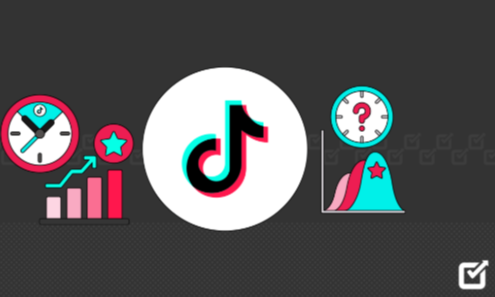When Is the Best Time to Post on TikTok for Higher Reach?

TikTok’s meteoric rise, boasting over 1.14 billion active users globally, has solidified its position as a leading platform for creators, brands, and marketers seeking to engage audiences with short-form video content. The platform’s algorithm, which prioritizes engagement metrics such as views, likes, comments, shares, and watch time, rewards content that resonates quickly. Posting at the right time can significantly boost your chances of landing on the For You Page (FYP), TikTok’s primary discovery engine. This article explores strategic timing, audience insights, and actionable tactics to optimize your TikTok posting schedule for maximum reach in 2025, ensuring your content thrives in a competitive digital landscape.
Understanding the Algorithm’s Timing Sensitivity
TikTok’s FYP algorithm amplifies content based on early engagement, making the timing of your posts a critical factor. Videos that garner likes, comments, and completions within the first hour are more likely to be pushed to broader audiences. Posting when your target audience is active—scrolling during breaks, commutes, or leisure time—maximizes initial traction. Since TikTok’s user base spans multiple time zones, optimal posting times vary by region and demographic. Aligning your schedule with peak activity periods enhances visibility, helping your content break through the noise and reach new viewers organically.
Broad Trends for Posting Times
Analyzing user behavior across millions of TikTok accounts reveals general patterns for high engagement. Weekdays typically outperform weekends, with users most active during specific daily windows. Below are recommended posting times (in Eastern Standard Time, EST) for each day, based on global activity trends:
- Monday: 6 AM, 11 AM, 9 PM—early mornings, midday breaks, and evening scrolls drive views.
- Tuesday: 3 AM, 5 AM, 10 AM, 3 PM—early risers and afternoon lulls are key.
- Wednesday: 6 AM, 9 AM, 10 PM—commute times and late evenings see strong activity.
- Thursday: 8 AM, 1 PM, 6 PM—midday and post-work hours capture engaged users.
- Friday: 4 AM, 2 PM, 4 PM—pre-weekend energy fuels afternoon spikes.
- Saturday: 10 AM, 6 PM, 9 PM—weekend leisure peaks in late morning and evening.
- Sunday: 8 AM, 9 AM, 5 PM—morning and late afternoon slots perform well.
These times reflect averages and may require adjustment for your audience’s location. For example, a 2 PM EST post targets North American lunch breaks but may miss European evening viewers, so consider your primary audience’s time zone.
Customizing to Your Audience’s Habits
Generic schedules provide a foundation, but your audience’s unique behavior is the key to unlocking higher reach. TikTok’s analytics, accessible via a Business or Creator account, offer detailed insights into follower activity. To check this:
- Go to Settings, select Account, and switch to a Business Account.
- Access Creator Tools, then Analytics, and view the Followers tab for activity hours and geographic data.
If your audience is concentrated in North America, prioritize 11 AM–2 PM or 5 PM–8 PM local time. For international followers, test posts across time zones, such as 8 AM EST for North America and 3 PM EST for Europe. Regularly analyze performance data to refine your schedule, focusing on times when past posts achieved higher views or engagement.
See Also: The Evolution of Smart Wearables: How AI Is Enhancing Fitness Tech
Aligning with Your Industry’s Audience
Different niches attract distinct audiences, influencing optimal posting times. Consider these industry-specific patterns:
- Lifestyle and Fashion: Late afternoons (2 PM–4 PM) and evenings (6 PM–8 PM) align with casual browsing.
- Education and Tutorials: Early mornings (6 AM–8 AM) for focused viewers or evenings (7 PM–9 PM) for relaxed learning.
- Food and Beverage: Lunch hours (12 PM–2 PM) and weekend evenings (5 PM–7 PM) target food lovers.
- Fitness and Health: Early mornings (5 AM–7 AM) or post-work hours (4 PM–6 PM) suit active users.
Study competitors in your niche to identify their high-performing posting times. If a beauty creator’s 3 PM posts consistently gain traction, test similar slots while tailoring content to your unique style.
Matching Content Type to Timing
The type of content you post—whether videos, photo carousels, or text-heavy clips—impacts engagement based on timing. General patterns suggest:
- Videos: Weekdays 12 PM–3 PM or weekends 5 PM–7 PM, when users are taking breaks.
- Photo Carousels: Weekdays 11 AM–1 PM or weekends 9 AM–12 PM, ideal for leisurely scrolling.
- Tutorials or How-Tos: Mornings (6 AM–9 AM) or evenings (6 PM–8 PM) for attentive viewers.
For example, a quick dance video at 6 PM Thursday taps into evening entertainment seekers, while a skincare tutorial at 7 AM targets morning routine enthusiasts. Align your content type with these windows to boost watch time and engagement.
Capitalizing on Trends for Boosted Visibility
Timing extends beyond hours—it’s about syncing with TikTok’s fast-paced trends. Trending sounds, hashtags, or challenges can propel your content to the FYP, especially when posted during peak engagement windows. Explore the Discover page to spot rising audio or hashtags relevant to your niche. For instance, a fitness brand might use a trending upbeat track for a workout clip posted at 5 PM Friday, combining trend relevance with high user activity. Create original content to avoid algorithmic penalties for repurposed videos, ensuring your posts feel fresh and authentic.
Balancing Frequency and Consistency
Posting 1–3 times daily keeps your account active in TikTok’s algorithm while allowing you to test different times and formats. Consistency builds audience familiarity, increasing the likelihood of repeat engagement. Use scheduling tools to automate posts during peak windows, such as 12 PM and 6 PM daily, ensuring you maintain a steady presence without sacrificing quality. Overposting low-effort content can dilute your brand, so prioritize polished videos that align with your audience’s interests.
Experimenting and Refining Your Approach
Optimal posting times evolve with your audience and TikTok’s algorithm. Start with the general times above, then test variations—shift posts by 30–60 minutes to compare performance. Use TikTok Analytics to track views, reach, and engagement metrics, identifying which slots yield the highest results. For example, if Wednesday 6 PM posts outperform 9 AM ones, adjust your schedule to prioritize evening posts. Conduct A/B tests over a few weeks, experimenting with content types and times to build a data-driven strategy tailored to your audience.
Steering Clear of Low-Traction Windows
Certain periods consistently see lower engagement, reducing your content’s visibility. Avoid posting during:
- Sundays: 10 PM–2 PM, when user activity drops significantly.
- Tuesdays: After 10 AM, unless targeting early morning audiences.
- Weekends: Late nights (12 AM–4 AM), when most users are offline.
These low-engagement windows, particularly Sunday afternoons, are less likely to drive initial traction, limiting your reach. Focus on weekdays, especially Tuesday, Wednesday, and Friday, for the strongest visibility.
Amplifying Content for Greater Reach
Timing is only one piece of the puzzle—content quality drives sustained engagement. Craft videos with compelling hooks within the first 3 seconds, using bold visuals or questions to grab attention. Ensure high-quality visuals, readable text overlays, and clear audio to boost watch time, a critical algorithmic factor. Incorporate niche-specific hashtags (3–5 per post) to enhance discoverability, and engage with comments to foster community interaction, further signaling value to the algorithm.
By combining strategic timing with high-quality, trend-savvy content, you can maximize your TikTok reach and build a loyal audience. Regularly analyze performance, adapt to your niche’s patterns, and maintain consistency to ensure your videos thrive on the FYP, driving visibility and engagement in 2025’s competitive landscape.

